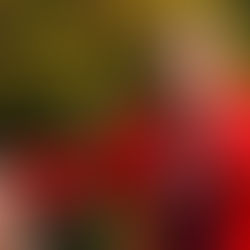Our "Bruce to Elizabeth" Celebration Rally, Part 2
- Alistair McConnachie
- Jul 7, 2022
- 5 min read

A Force For Good held our "Bruce to Elizabeth: Our Great British Monarchy" Celebration Rally in the heart of the Great British City of Stirling on Saturday 25 June 2022.
It was twenty years ago, in 2002, that Stirling became Scotland's sixth city to mark the 50th Anniversary of the Queen's accession to the throne.
We were there, 20 years later, to remember Bruce and to celebrate the Platinum Jubilee of his direct descendent, Queen Elizabeth.
The following is Part 2 of the notes which we made prior to the day.
HOW IS THE QUEEN RELATED TO BRUCE?
We have published the Family Tree in our Special Edition of Union Heart, "Happy and Glorious" which can be purchased here.
Essentially she is related going back through the Stuarts
BRUCE AND HIS STEWART/STUART LINE
When Bruce was King (from his Coronation in 1306 to his death in 1329), his eldest daughter Marjorie married Walter Stewart (6th High Steward of Scotland). She gave birth to a child in 1316, who was to go on to become Robert Stewart, or Robert II, and who started the Stewart dynasty.
It is generally believed that Marjorie died giving birth to Robert after being knocked from a horse (on 2 March 1316) although some believe she may have lived on and died in a second pregnancy.
Today, at the junction of Renfrew Road and Dundonald Road in Paisley, a cairn marks the spot called "the Knock", near where Marjorie reputedly fell. Bruce Road and Marjorie Drive are named in her honour. She is buried at Paisley Abbey. Every year on the first Saturday of June, the town of Bathgate celebrates the marriage of Marjorie and Walter in their annual historic pageant.
JAMES VI of GREAT BRITAIN
It was the Stewart dynasty which was to go on to create the Realm of Great Britain itself when King James Stuart the VI of Scots became also the King of England – as a result of the death of Elizabeth I on 24 March 1603. A Union which he described as "the happy connection of two so mighty nations".
It was James's mother, Mary Queen of Scots, who is said to have changed the spelling from Stewart to Stuart after her time in France, owing to the French alphabet not having the letter "w".
It was Bruce's direct descendent, James VI, who proclaimed himself KING OF GREAT BRITAIN – something no doubt that Bruce himself would have been proud to see!

And it was this Scots King James VI who, as a result of that Union, created the Union Jack flag of renown!
And moving along another century, it was under a Stuart Queen – Queen Anne – that Scotland and England entered into Parliamentary Union on 1 May 1707.
And when Queen Anne died in 1714 without any children, the family line was traced down through the Stuarts, to the Hanoverians, to find George I, from which it has continued ever since.
So it is thanks to Bruce that we had the Stuarts, and it is thanks to the Stuarts, not only that we had Regal (1603) and Parliamentary (1707) Unions, but that we have the Queen today, and her descendants, Prince Charles, Prince William and his children – all direct descendants of Robert the Bruce.
As such, they are an example of how the Royal Family is able to physically embody the history of all parts of our Islands, and thereby help to reconcile the conflicts of the past.
Robert the Bruce belongs to all of Scotland, and all of the United Kingdom, and no doubt if he were with us today, he would appreciate our message of unity.
THE QUEEN'S TERRITORY
He'd certainly be proud that one of his direct descendants is not only Queen of Scots, but Queen of all the United Kingdom today, including Northern Ireland, which his brother Edward invaded in 1315.
As well as Queen and Head of State of Guernsey and Jersey, and the Isle of Man which Bruce invaded, capturing Castle Rushen on 21 June 1313, thereby denying this strategic Isle to Edward II.
As well as Queen and Head of State of 14 Commonwealth Realms worldwide…of Antigua and Barbuda; Australia; Belize; Canada; Grenada; Jamaica; New Zealand; Papua New Guinea; St Kitts and Nevis; St Lucia; St Vincent and the Grenadines; Solomon Islands; The Bahamas; and Tuvalu.
As well as Queen and Head of State of 14 British Overseas Territories worldwide…of Anguilla; Bermuda; British Antarctic Territory; British Indian Ocean Territory; British Virgin Islands; Cayman Islands; Falkland Islands; Gibraltar; Montserrat; Pitcairn, Henderson, Ducie and Oeno Islands; Saint Helena, Ascension and Tristan da Cunha; South Georgia and the South Sandwich Islands; Sovereign Base Areas of Akrotiri and Dhekelia; and the Turks and Caicos Islands.
As well as the ceremonial Head of the Commonwealth; which comprises 54 countries across all six inhabited continents.
As well as Britain's longest-reigning monarch.
As well as the second longest reigning monarch that the world has ever known!
We'd like to think Bruce is looking on proudly and saying "Aye Lass, you've done well!"
TWO WAYS of LOOKING AT THE PAST
You can seek out the fault lines, find the differences, uncover the cracks, drive in wedges, try to prise them open and make them bleed again, or you can aim to heal and reconcile.
We can look on Bannockburn as a Scots v English conflict, which can tend to aggravate past wounds, or we can say, isn't it wonderful that we've moved on!
Indeed, we go further and we take the view that Bruce had a role to play in the ultimate creation of what we know today as the United Kingdom.
THE ROLE OF BRUCE in the CREATION OF BRITAIN
Unlike the Scottish nationalists, we see Bruce as a key figure in the national evolution of Britain.
Someone who is part of the Great British Pantheon of Heroes placed firmly within a British, not just a Scottish context.
One who embodies the Great British Spirit of Liberty.
A heroic champion who ensured that when it came time for Union – whether Regal Union under Bruce's descendants, the Stuarts, or Parliamentary Union under the Stuarts also – Scotland was able to enter into it as a nation able to stand on its own feet.
We see him as a man who helped to create the Scotland which created the Union, which created the Greatest Country on earth – the United Kingdom.
For us, his Legacy can be seen as profoundly British.
This view of Bruce as a Hero of the British value of Liberty, and as an early British Constitutionalist who inspired the Declaration of Arbroath – and as a Founder of a Scotland which would go on to do Great Things as part of Britain, is still relevant.
Rather than seeing Bruce as a divisive figure of separation, we can see him as how many in the past saw him – as a key figure in our evolution towards ever closer, ever more successful, ever more peaceful Union.
THE QUEEN'S ROLE in the RECONCILIATION of PAST CONFLICT
And because our present Queen is a direct descendent of Robert the Bruce, we see her as an embodiment of the history, and the people, of all parts of our Islands. In that role, she can help reconcile the conflicts of the past in her own being; a living representative of a harmony between Scotland and England today.
So, today, we are thankful that the conflicts of the past can be reconciled within Bruce's direct descendant, Queen Elizabeth...and of course, in all her children.
Elizabeth the Second, by the Grace of God of the United Kingdom of Great Britain and Northern Ireland and of Her other Realms and Territories Queen, Head of the Commonwealth, Defender of the Faith.
Long May She Reign! God Save the Queen!
Check out the Bruce to Elizabeth Family Tree in our Special Edition of Union Heart, "Happy and Glorious" which can be purchased here.
























Comments